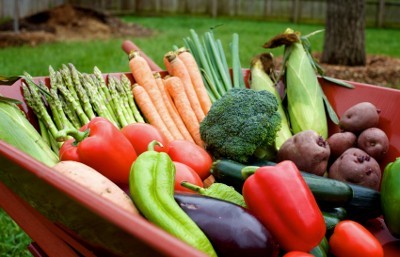Posted by: Sally Sampledesigner on 03/19/2016
Permaculture Guilds, How To Grow More - Sample Article Post Example 4

Permaculture guilds are an extension of a common gardening technique called companion planting.
[Sample Article, Blog Post, Daily Blurb or Status Update Example]
Companion planting is used in home gardening to increase the yield a certain area produces in a season. While permaculture guilds are almost exclusively used in permaculture, companion planting is more widespread. It's often used in traditional gardening, and actually, our grandmothers knew a thing or two about companion planting.
Aside from the promise of higher yields, there are many more potential benefits of companion planting.
Industrial agriculture focuses heavily on monoculture. There are vast areas, acres and acres, of a single crop! The machines are all built with a single purpose to plow, sow and then harvest these monotonous lands. Without these machines these monoculture expanses would not be able be sustained. And nature would be thankful.
Nature doesn't like to be monotonous. Take a forest for example. The sheer number of different species growing there is beyond count. And that is a very promising habitat for other creature to thrive in. You have birds, bugs, beetles, reptiles, worms,... all living in harmony.
Now take a corn field. Aside from the single crop of corn that is there during the growing season, that land is dead. There are no worms, birds, bugs there. After a few years, the birds don't come even after plowing. That's because the soil is completely dead. The only reason the corn grows there are the synthetic fertilizers that are applied by... yes, more machines.
Now, what permaculture does is it follows nature's example. It takes a forest as a role model and replicates it. You bring a forest to your back yard. What you get is called a 'forest garden'.
In a forest, you can observe that there are certain plant groups that are grown near each other time and time again. These different plants mutually benefit one another. A fancy term for this phenomenon is 'a guild'. There are many guilds that you can observe in nature: walnut guild, white oak guild, hazelnut guild, etc.
If you take that idea from nature that certain plants grow better if they grow next to another certain plant, and use it in your permaculture garden, your creating your very own permaculture guilds. if you use it on small scale (i.e. on your vegetable bed), it's called 'companion planting'. On larger scales (i.e. in your forest garden), it's called 'permaculture guilds'.
The takeaway from this article should be this: just observe. Observe the nature. Take what works there and the use it in your garden. You'll be pleasantly surprised with results.
The above technique is just a fraction of the permaculture arsenal. If you'd like to know how to use all the permaculture theory in practice, head on to my permaculture blog. Your garden will thank you for it.
[Sample Article, Blog Post, Daily Blurb or Status Update Example]
Article Source: http://EzineArticles.com/expert/James_L._Graham/1198587